Norway is often/sometimes plagued by fierce autumn/winter/spring/summer storms. Here in Trondheim, we’re usually well sheltered from the worst storms due to the city’s location within a fjord. This results in a rather tempered climate (as per Norway’s standards), with a mixture of mild rain, mild winds, mild snow and occasional sunlight being the norm throughout a normal hour in Trondheim. This is usually more of a concern for the frustrated inhabitants rather than a concern for our antennas on the roof of Studentersamfundet. Once a fierce storm actually hits Trondheim, however, the worries intensify.
Storms in Trondheim often coincide with the late fall. Shorter days and the leaves falling off the trees function as a pavlovian trigger for all former station masters of ARK to start waking up in a cold sweat every slightly windy night. According to previous station master LA5GKA, it takes approximately 4-5 years for a station master to stop worrying about the antennas at ARK when the wind speed increases. (This also has a weak correlation with the average time it takes for the average station master to get married and start producing children and get other concerns in his life. :-))
ARK has some experience with bad storms. In 1992, for example, we had “Nyttårsorkanen”, which bereaved ARK of our previous attempt at a satellite dish. During the recent years, we’ve had the storms named “Dagmar” in 2011 and “Ivar” in 2013. Dagmar blew some of the elements of our VHF/UHF array off the roof, requiring us to do a major rebuilding of the entire array during 2012. This was not finished until early fall 2012, and the array was not fully operative until much later. (The array was later replaced by a brand new UHF/VHF-array in connection with a pre-project for LA3WUA’s master thesis at NTNU).
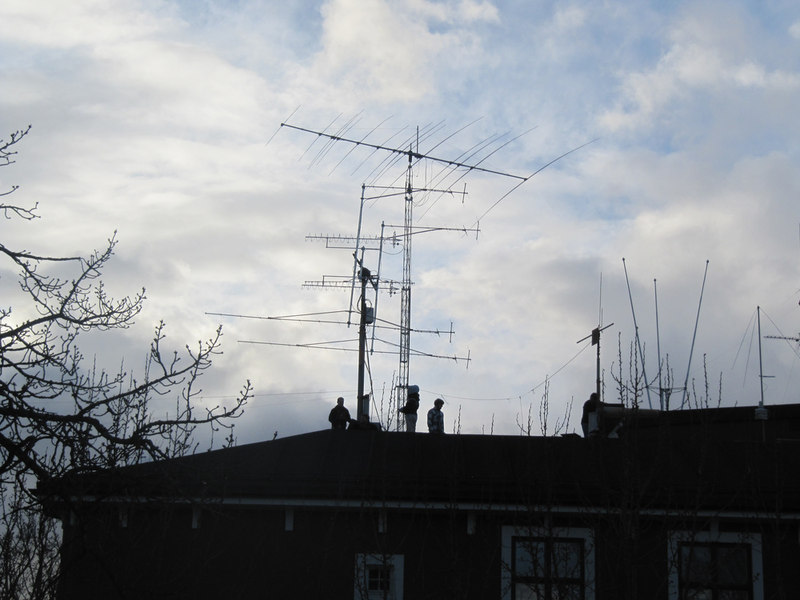
The previous UHF/VHF array during a rehaul in 2011. Maybe extra bitter that parts of it got blown down half a year later. Photo: LA2USA Espen Molven, from http://bilder.la1k.no/antennejobbing11.
With the long period during which the UHF/VHF array was QRT in mind, this naturally made us a bit nervous the next time a major storm hit Trondheim. We probably went a bit overboard with the antenna securing. For “Ivar” in 2013, for example, we secured all of our arrays with extra ropes. This was probably not necessary, ropes wouldn’t have saved the arrays from becoming destroyed, but they would at least have ensured that no arrays could fall off the roof and damage something/someone else. Our antennas survived, however. LA2T, the other local ham radio organization here in Trondheim, weren’t so lucky.
We have later taken a less nervous approach to antenna securing, but we always do measures if the wind reaches above 20 meters per second. The next major storm was going to be “Ylva” around the 23rd of November. The forecast said that the temperature would increase from -10 degrees Celcius to +10 degrees Celcius, and that the wind speeds would reach above 30 m/s. Our station master, LB5DH Henrik, therefore made the necessary preparations on Wednesday the same week.
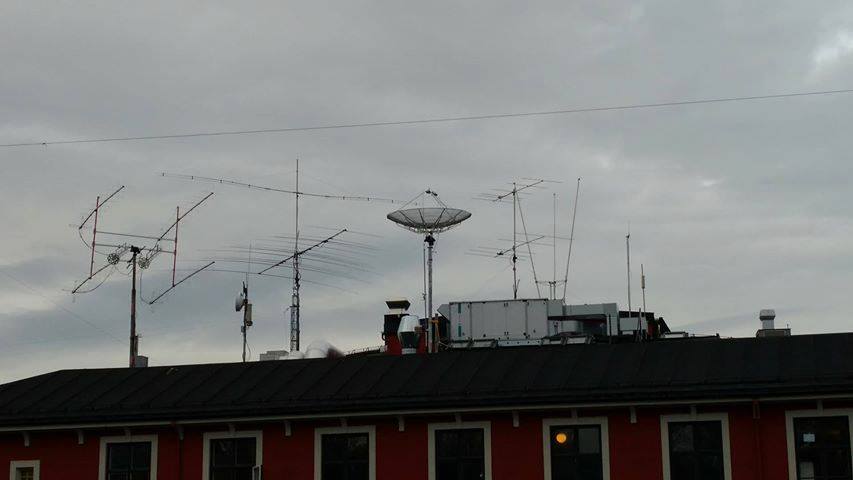
Antennas aligned with the expected direction of the wind.
The HF array mast was winched down to its lowest position, and all array antennas were aligned with the expected wind direction, to lessen the impact of the wind and reduce any vibrations. The satellite dish was rotated in such a way that the wind load would be as little as possible, i.e. with the dish pointing straight upwards towards the sky.
There was also one extra problem with the satellite dish: The rotor pole had already gotten slightly bent.
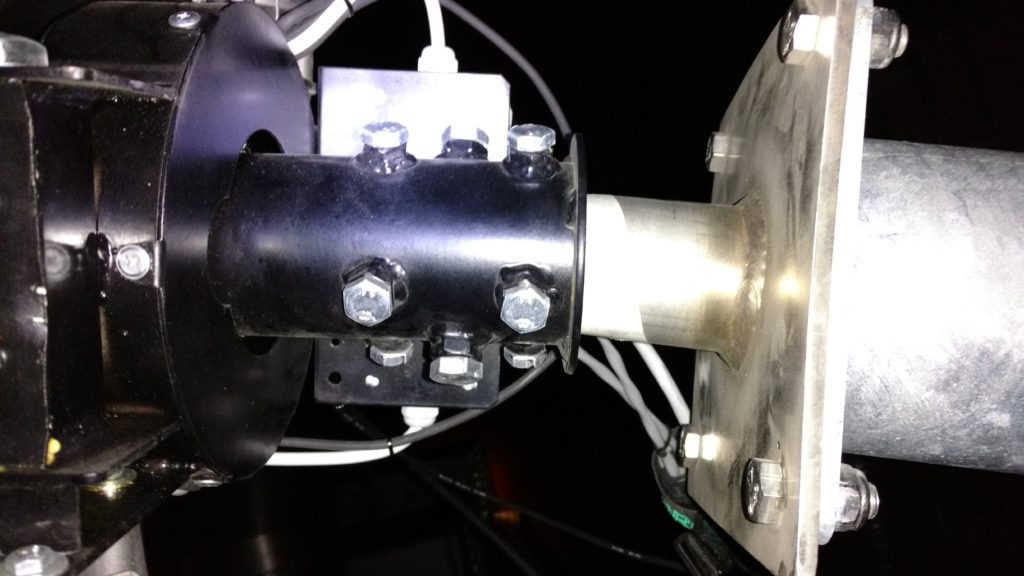
Photo: LB5DH Henrik Dobbe Flemmen
With the experience with the previous satellite dish in 1992 in mind, we therefore were extra nervous, and were determined not to let the satellite dish be destroyed by the first and best storm, like what happened to the previous dish in 1992. We therefore made some special preparations for the satellite dish by securing it to its pole using straps.
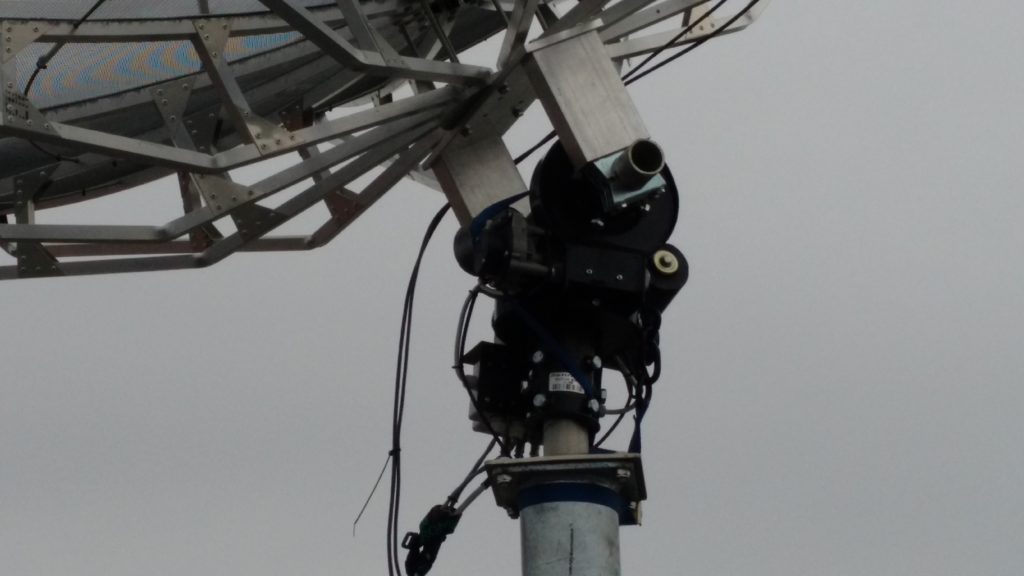
Photo: LB5DH Henrik Dobbe Flemmen

Photo: LB5DH Henrik Dobbe Flemmen
In the end, it turned out that the northern parts of Norway got the worst parts of the storm, and that the winds in Trondheim were only slightly mild at best. We’re still on the guard, however, as always. Remote control over the antennas makes it more convenient to adjust for changing wind directions, and we’re also thinking to invest in a rotating webcam to better monitor the antennas.
Aligning the antennas with the wind speed to avoid vibrations and resonance effects, and doing regular maintenance to avoid loose bolts is probably our best bet for preparing for storms. While not exactly excited to see whether our precautions are enough, we still have mild optimistic feelings for the future and a vague hope that our antennas should survive to see another year.
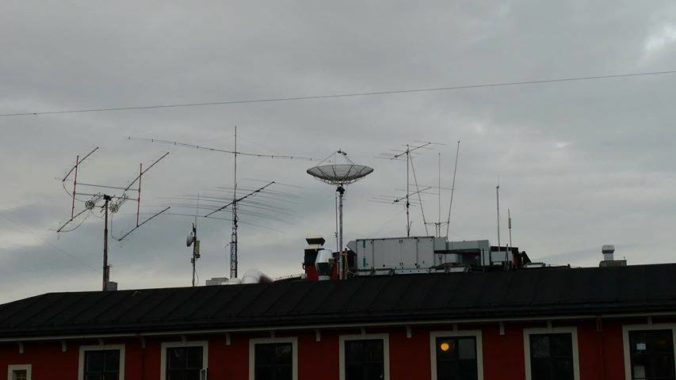

0 Comments
1 Pingback